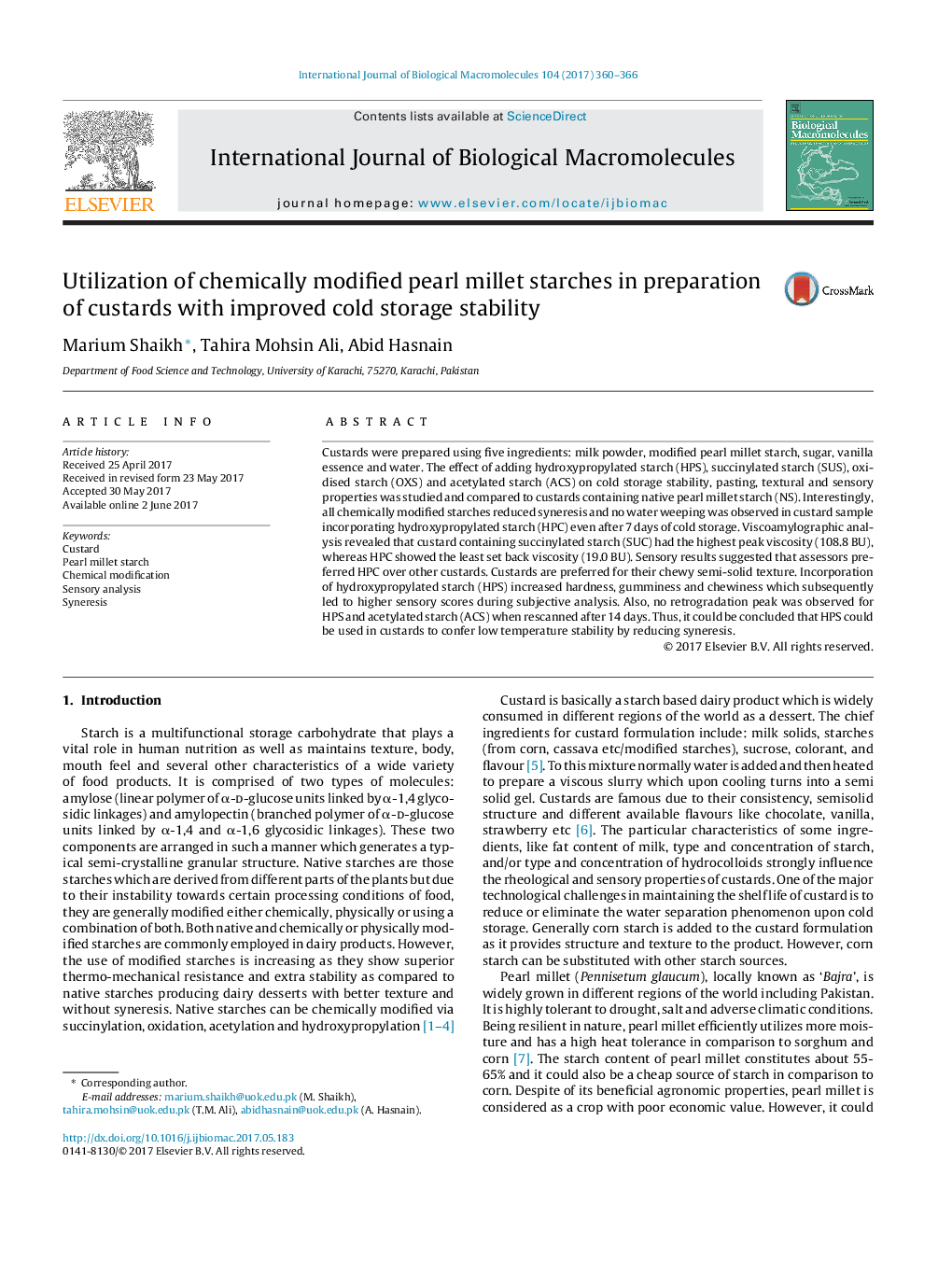| Article ID | Journal | Published Year | Pages | File Type |
|---|---|---|---|---|
| 5511657 | International Journal of Biological Macromolecules | 2017 | 7 Pages |
â¢Effects of chemically modified pearl millet starches were studied in custards.â¢Custard containing succinylated starch showed the highest viscosity.â¢No syneresis was observed in custard incorporating hydroxypropylated starch.â¢Overall acceptability of custard containing hydroxypropylated starch was highest.
Custards were prepared using five ingredients: milk powder, modified pearl millet starch, sugar, vanilla essence and water. The effect of adding hydroxypropylated starch (HPS), succinylated starch (SUS), oxidised starch (OXS) and acetylated starch (ACS) on cold storage stability, pasting, textural and sensory properties was studied and compared to custards containing native pearl millet starch (NS). Interestingly, all chemically modified starches reduced syneresis and no water weeping was observed in custard sample incorporating hydroxypropylated starch (HPC) even after 7Â days of cold storage. Viscoamylographic analysis revealed that custard containing succinylated starch (SUC) had the highest peak viscosity (108.8 BU), whereas HPC showed the least set back viscosity (19.0 BU). Sensory results suggested that assessors preferred HPC over other custards. Custards are preferred for their chewy semi-solid texture. Incorporation of hydroxypropylated starch (HPS) increased hardness, gumminess and chewiness which subsequently led to higher sensory scores during subjective analysis. Also, no retrogradation peak was observed for HPS and acetylated starch (ACS) when rescanned after 14 days. Thus, it could be concluded that HPS could be used in custards to confer low temperature stability by reducing syneresis.
